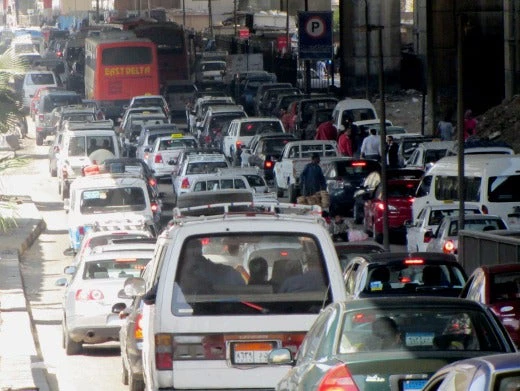 When I told friends and colleagues that my new job would be based in Cairo, almost everyone mentioned the awful congestion in the city, and how I would be wasting a tremendous amount of time being stuck in traffic. And how right they were: When it comes to traffic, Cairo is one of the most congested cities in the world. Of course, the city’s residents already know congestion is one of the city’s biggest problems. What they probably don’t know is exactly how much it’s costing them.
When I told friends and colleagues that my new job would be based in Cairo, almost everyone mentioned the awful congestion in the city, and how I would be wasting a tremendous amount of time being stuck in traffic. And how right they were: When it comes to traffic, Cairo is one of the most congested cities in the world. Of course, the city’s residents already know congestion is one of the city’s biggest problems. What they probably don’t know is exactly how much it’s costing them.
Around US$8 billion dollars a year are wasted in the Greater Cairo Metropolitan Area because of traffic, with expectations that this figure will rise to US$18 billion by the year 2030. It might be hard to get your head around this number, but to put it in perspective, this amounts to over three percent of Egypt’s total Gross Domestic Product. In other words, traffic congestion in Cairo is so bad that it’s become a drain on the national economy.
If you’re thinking that the cost to Cairo is more or less the same as it is in any other big city which loses money because of traffic congestion on its streets, think again. Other cities are congested, but the impact on their country’s national economies is not so severe. In New York, known too for bad traffic, congestion-related waste only comes to about 0.07% of American GDP. Cairo’s case is especially dire.
How much does its traffic cost you, the average Cairene? About LE 2,400 (US$ 335) a year. It’s mostly a reflection of how much time you lose sitting in traffic, of a reminder that “time is money”.
At the World Bank, we’re committed to easing Cairo’s traffic problem and its negative effects, so we’ve supported the Egyptian Government in producing a detailed traffic Congestion Study to tackle this problem. This study, the first of its kind for Cairo, presents a comprehensive list of over 50 policy and investment measures that could be adopted. These can be boiled down to four important areas:
- Improve traffic management: Whether it’s putting traffic lights at intersections, improving sidewalks and crossings, or providing bus stops, traffic management measures are easy to implement and can be helpful as a short-term solution.
- Empowering decision-makers to take the problem on: The recent establishment of the Greater Cairo Transport Regulatory Authority is a step in the right direction when it comes to managing urban transport in the city, but it needs to have resources and support from the highest levels of government to address the tough problem of congestion in Cairo.
- Use transport pricing to improve the situation. The strategic revision of traffic and transport-related charges can go a long way towards easing congestion in Cairo. Introducing and enforcing on-street parking and offering financial incentives to use public transport would encourage a shift from private cars to public transport. This plan should ensure that commuters’ needs are always at the center of attention.
- Public transportation is the long-term solution: Although traffic management and pricing can yield good short-term results, the long-term solution to Cairo’s traffic problems is the development of reliable public transport. Given the high demand, solutions should focus on mass transit systems such as bus rapid transit and trams, rather than simply introducing a more regular bus service. Investments in public mass transit systems are expensive, but experience from around the world shows that the economic benefits far outweigh their costs. The World Bank is committed to reducing poverty and boosting shared prosperity in Egypt. In Cairo, that means addressing the high cost of congestion with solutions that mean you spend less time on the road.


Join the Conversation